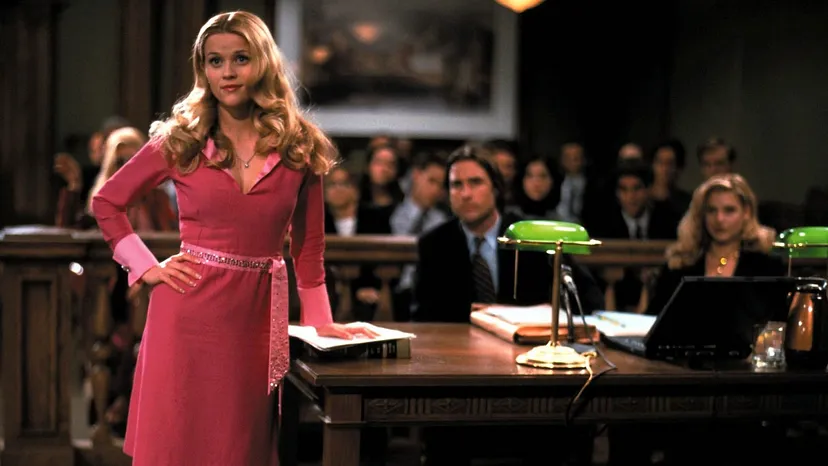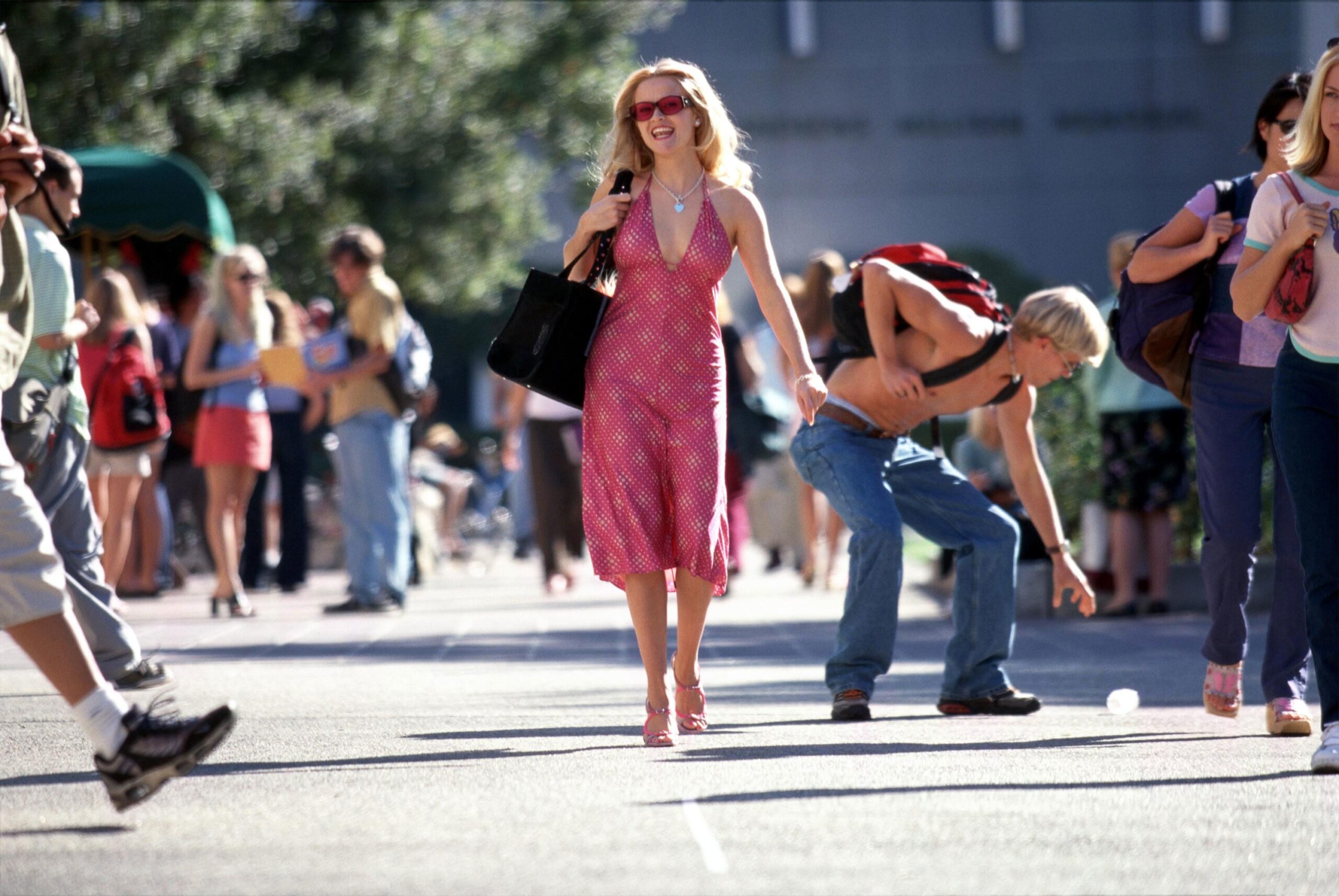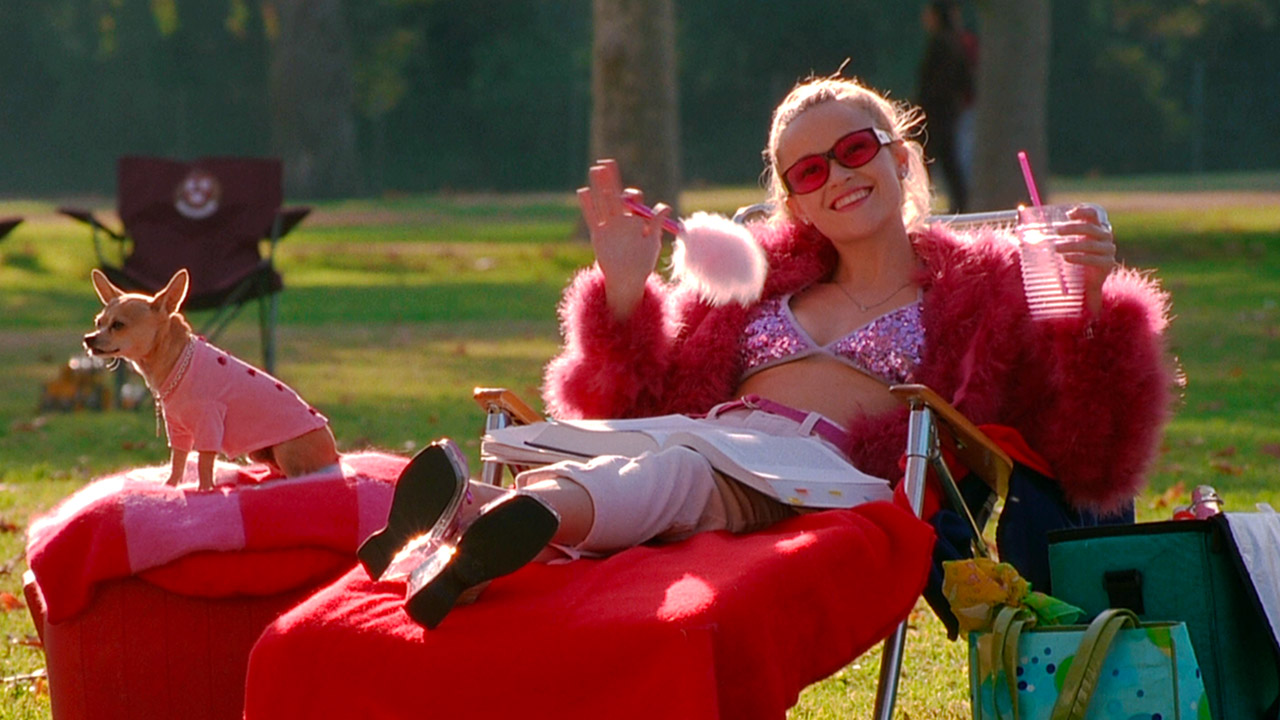By Afroditi A. Karagianni,
Legally Blonde
Legally blonde was directed by Robert Luketic and released in 2001. The protagonist of the film is Elle Woods, a fashionable sorority queen, who gets dumped by her boyfriend just before her SATs. Devastated, she decides to follow him to law school and get him back. Soon, she realizes that being a lawyer is far more interesting than she initially thought and that there is more to herself than just her impressive looks.
As far as aesthetics are concerned, the direction, costumes, and setting of the movie were done magnificently. The colors are mostly vibrant and warm, while pink and a vast array of different shades are visibly favored. The scenario is very engaging, the dialogue is witty, and the casting directors did a phenomenal job. It is worth noting that Reese Witherspoon, the actress who plays Elle Woods, is the ideal choice for the role, and personifies the character with respect, creativity, and care.

As to feminism, Legally Blonde is considered a classic, woman-empowering film, primarily thanks to the design of Elle’s character. Upon first glance, one can tell that Elle is a fashionista. She wears bright and colorful clothes, fashionable sunglasses, cute bathing suits, and designer shoes. Her style can be described as ultra-feminine, and she often wears outfits that compliment her figure, highlight her beauty and make her stand out. As a person, she appears to be sweet, caring, sensitive, positive, and affectionate. Over time, we also get accustomed to her intelligence, wit, assertiveness, self-assurance, innovativeness, and ethics. Towards the end, one can tell that Elle is both fashionably and academically inclined and highly adaptive. Without a shadow of a doubt, she can evolve in any environment, thanks to her resilience, positive attitude, and determination.
This styling choice for Elle is absolutely brilliant. More specifically, when the movie was released, cinema (with a few exceptions) had a thing for making hyper-feminine characters either the mean girls or the girls that were intellectually inferior, compared to the “tomboys”. Mean Girls’ (2004) Regina George, is a prime example of a character that although iconic, falls into this very trap. She is mean, shallow, ruthless, passive-aggressive and she is not hesitant to stoop low to get what she wants. Although bright, Regina uses her intelligence to manipulate others and serve her dubious goals. At the same time, an ultra-feminine friend of hers, Karen Smith, is naïve, clueless, and struggles academically. She takes good care of her appearance, is often seen wearing mini dresses, high heels, skirts, and crop tops (like Regina), and is generally regarded as ‘the dumbest’ of the group, even by her best friends. In visible contrast comes Cady Heron, the newest member of the “Plastics”. She is a tomboy, who does not know how to dress femininely. Often seen in t-shirts, jeans, and shirts, Cady excels in school and is depicted as the smartest among the girls. In an effort to fit in more with the group, she momentarily changes her style, and as she dresses more femininely, it is as if she unlocks a –surprise– spiteful and superficial side to her. She grows petty, defensive, selfish, and stubborn and gets visibly jealous of Regina’s popularity and social status. In the end, she returns to her previous style and somehow, her “original” personality. Do not get me wrong, I really enjoyed watching Mean Girls and it definitely has its fair share of positive messages to send, but I feel that it is vital that we took a closer look at how its characters were designed and the reasons behind it. Of course, it goes without saying that multiple other movies at the time also followed the same character tropes for both the hyper feminine and tomboy characters.
From all the above, it is quite evident that Hollywood at that time made a mockery out of femininity, demonized it and did not encourage its expression, especially if it was executed fiercely. The mean or dumb girls were those who dressed femininely, and the tomboys, those that “did not put effort in their appearance” were considered sharper, and more profound thinkers, which is an incredibly sexist way of thinking.
Elle Woods begs to differ, a woman who is both very feminine and intelligent. She is not afraid to express her style, while she simultaneously is a very successful lawyer. She even utilizes her knowledge of fashion when a salesperson attempts to trick her, or in a murder case where she is trying to help her client, which is truly groundbreaking for the time the film was shot. Furthermore, although many think of her as a dumb blonde, Elle never loses site of who she is. As feminism supports women dressing to their liking and using clothes as a medium for self-expression and liberation, Elle Woods could –under no circumstances– escape characterizations such as “feminist icon”, given to her by the film’s fanbase. She really is a charismatic and dynamic role model for the younger generations and poses as a constant reminder that staying true to who you are is the best thing one will decide to do.

The film also highlights the essentiality that women follow their dreams and that they are the sole ones dictating their future. It encourages girls to be independent, driven, ambitious, and confident. Finally, it tackles issues like workplace harassment and internalized misogyny, from which many real-life people also suffer, in remarkable ways.
Legally blonde is genius. Many avoid watching it, for fear it might be shallow, which could not be further from the truth. This film is incredibly appealing and possesses multiple feminist elements, which are presented astonishingly. It teaches viewers valuable lessons and tears down many prejudices and misconceptions about women, and their relationships with each other.
References
- how mean girls demonize hyper-femininity. Youtube. Available here
- Mattel’s Unceasing Abuse of Chinese Workers: An investigation of six Mattel supplier factories. China Labor Watch. Available here
- Deterioration of Mattel’s Labor Conditions: An Investigation of Four Factories. China Labor Watch. Available here




